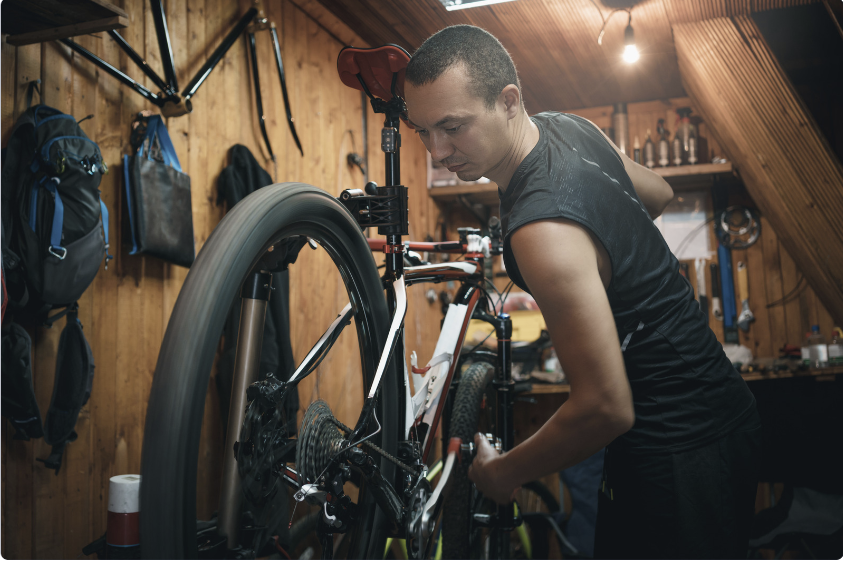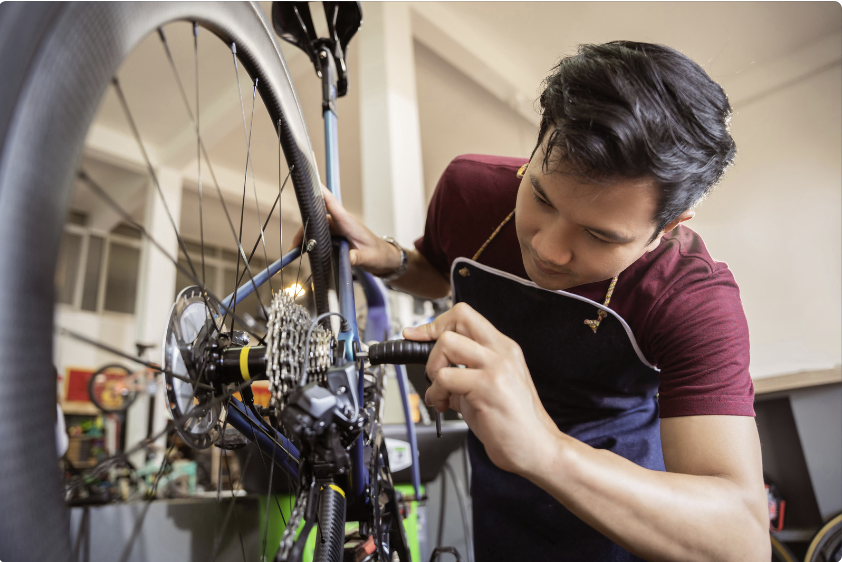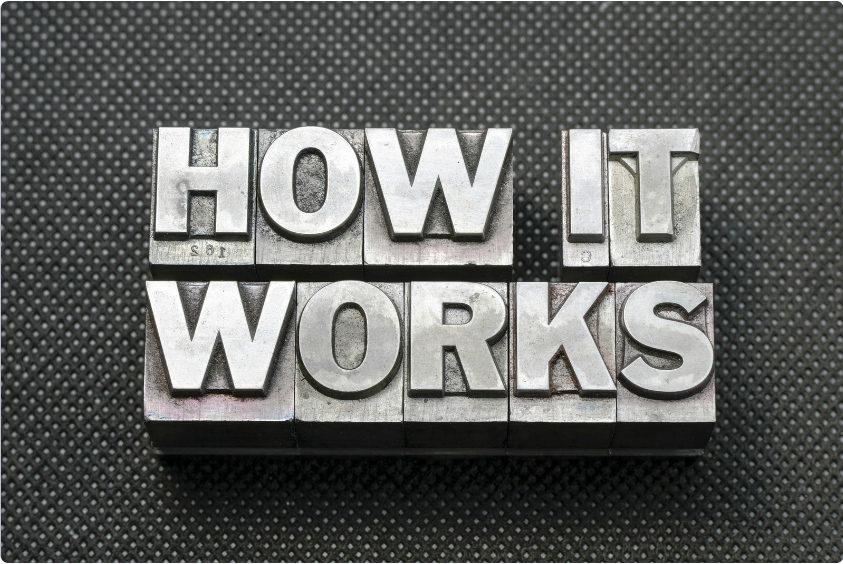Reasons Why You’re Bike Chain Won’t Go Backward? It’s happened to the best of us. You’re out on a ride, enjoying the wind in your hair when suddenly you realize that your bike chain won’t go backward. What gives?

There are a few reasons why this might be happening, and we’ve got the scoop on all of them. Keep reading to find out more.
Bike Chain

One of the most common reasons why a bike chain won’t go backward is that the chain is too tight.
If your chain is too tight, it can cause the teeth on the gears to become misaligned, which will prevent the chain from moving properly.
How to fix:
Simply use a chain tool to loosen the chain until it has some slack. Increase the strain on the chain and adjust the connection according to your convenience. Obtaining the correct tension may require some trial and error. Make sure it is not overly tightened.
Lake of Lubricant
Lubrication keeps your bike chain from rusting and corroding, which can cause it won’t go backward. It also prevents friction between metal components, which can help extend the life of your bike chain. Plus, a well-lubed bike chain will make sure your ride is as efficient as possible.
How Do I Re-Lube My Bike Chain
Once you have removed any dirt or grease from the chain links with a degreaser and an old toothbrush, take an old rag (or paper towels) and wipe off any excess residue before applying fresh lubricant onto each link.

You want to make sure the lubricant thoroughly covers the entire chain without leaving any oily patches behind — this ensures that every single link is getting its share of protection!
Finally, use an old rag (or paper towel) to wipe off any excess lubricant from the outside of both wheels so that it won’t attract dust or dirt later on down the road.
Derailleur hanger

Another reason why your bike chain might not be going backward is that the derailleur hanger is bent.
The derailleur hanger is what keeps the derailleur in place, and if it’s bent, it can cause the chain to come off track.
How to fix:
You’ll need to use a wrench to straighten out the hanger. You need cleaning water, a cloth, and more. Hold the chain and soak the rag in cleaning water. Move it. Flowing dirt. Degrease the chain lightly. Avoid heavy degreasers. Finally, scrub the cassette and adjacent parts using a multi-brush.
Blocking the path of the chain

The final reason why your bike chain might not be going backward is that there is something blocking the path of the chain.
This could be a piece of debris that has become wedged in between the gears, or it could be a build-up of dirt and grime.
To fix this, you’ll need to use a brush or rag to remove whatever is blocking the path of the chain.
The gears are clean and free of debris
Finally, make sure that all of the gears are clean and free of debris. A dirty or gummed-up gear can cause all sorts of problems, including a chain that won’t go backward.

How to fix:
To clean the gears, simply use a rag and some degreaser or petroleum jelly. Wipe down all of the gears, being sure to get in all of the nooks and crannies.
If none of these steps solve the problem, then it’s possible that there’s an issue with one of the other components of the bike, such as the shifter cables or cassette.
In this case, it’s best to take the bike to a qualified bicycle mechanic for further diagnosis and repair.
How does a Bike Chain work?
The chain is an essential part of a bicycle, connecting the pedals to the wheel. It’s what makes it possible to pedal and move forward. But how does it work? Keep reading to find out how a bike chain works.
A bike chain is made up of metal links held together by rivets. The links have inner and outer plates.
The inner plates have teeth that mesh with the teeth on the cogs of the gears. The outer plates hold the inner plates together.
When you pedal, the force from your legs turns the chain, which in turn turns the gears and propels the bike forward.

The average bike has between 100 and 130 links, and they’re all different sizes.
The larger ones are at the back and get progressively smaller as they go toward the front. This is because bikes have more gears at the back than at the front.
Bike chains usually come in two widths – 1/8 inch and 3/32 inch.
The width you need depends on your bike. BMXs and single-speed bikes generally use 1/8-inch chains, while multi-speed bikes usually use 3/32-inch chains.
You can usually tell what width you need by looking at your old chain – if it’s 1/8 inch wide, you’ll need another 1/8-inch chain; if it’s 3/32 inch wide, you’ll need another 3/32-inch chain.
If you’re not sure, take your old chain to a bike shop and they’ll be able to help you out.
Caring for Your Chain
If you want your chain to last, it’s important to take care of it. First of all, keep it clean – a dirty chain will wear out more quickly than a clean one. Use a rag and some degreaser to clean off any dirt and grime after every ride.

It’s also important to lubricate your chain regularly. This helps to reduce friction, which protects both your chain and your gears from wear and tear.
Apply lubricant to your chain before every ride, making sure you get into all the nooks and crannies.
Wipe off any excess because too much lubricant can actually attract dirt and grime, which will shorten the life of your chain even further!
Now that you know how a bike chain works, you can enjoy your rides even more!
If you ever have any issues with your bike chain, you’ll be able to fix them in no time flat. Just remember to keep it clean and lubricated, and it should give you years of trouble-free riding enjoyment.
Conclusion
A bike chain that won’t go backward can be frustrating, but luckily it’s usually an easy problem to fix.
In most cases, all you need to do is realign the derailleur or adjust the tension on the chain.
If these steps don’t work, then there may be an issue with another component on your bike, in which case you’ll need to take it to a qualified bicycle mechanic for further diagnosis and repair.